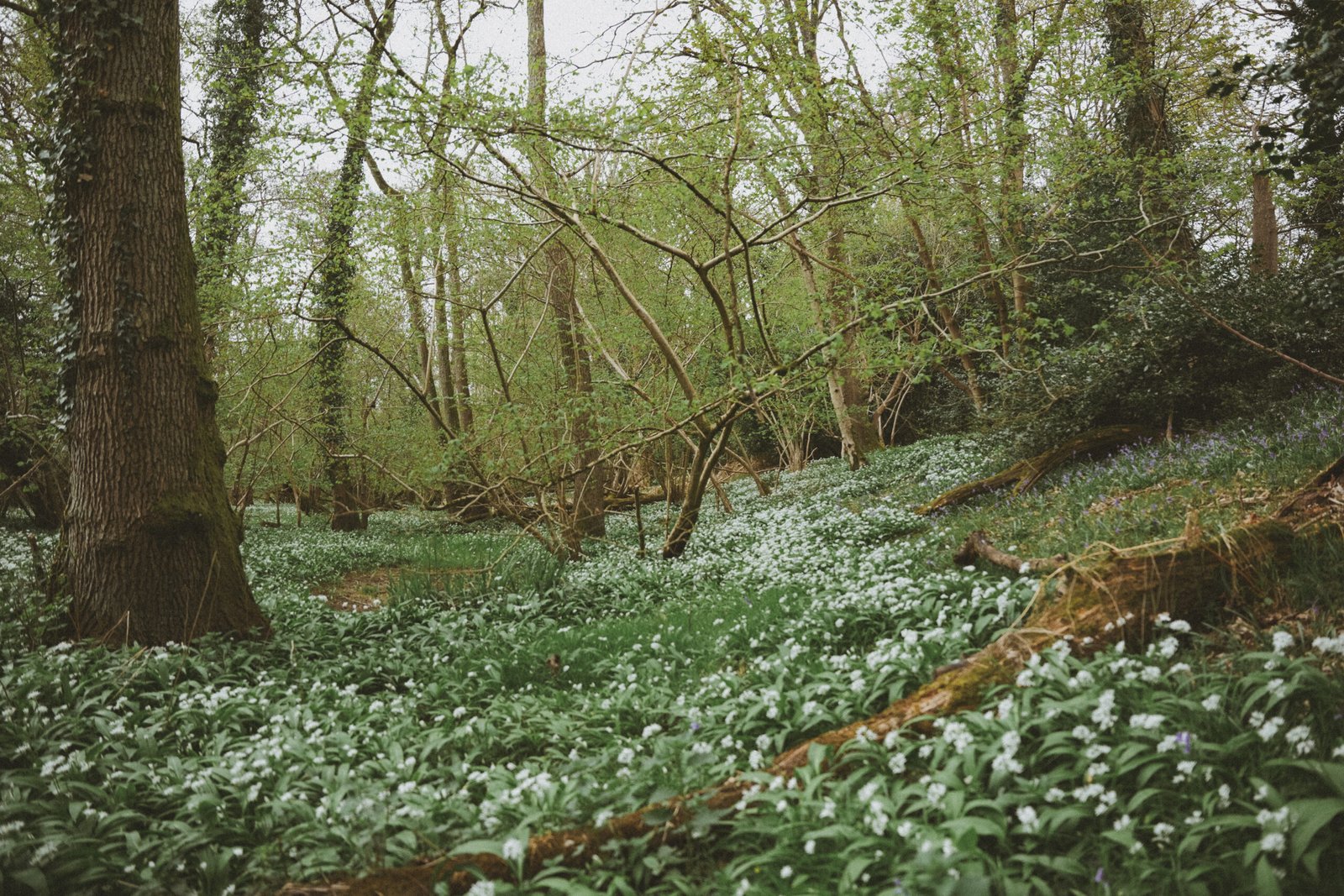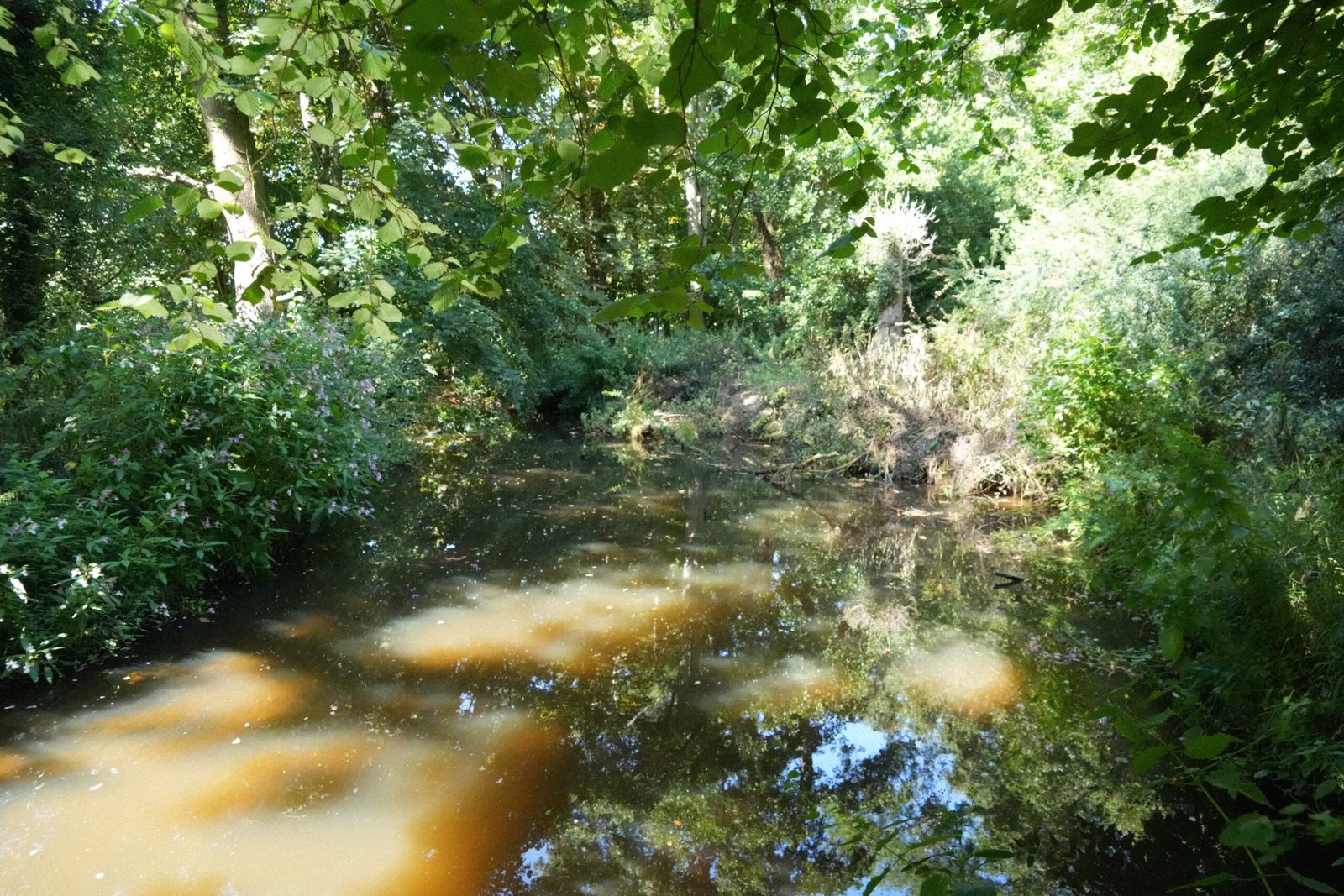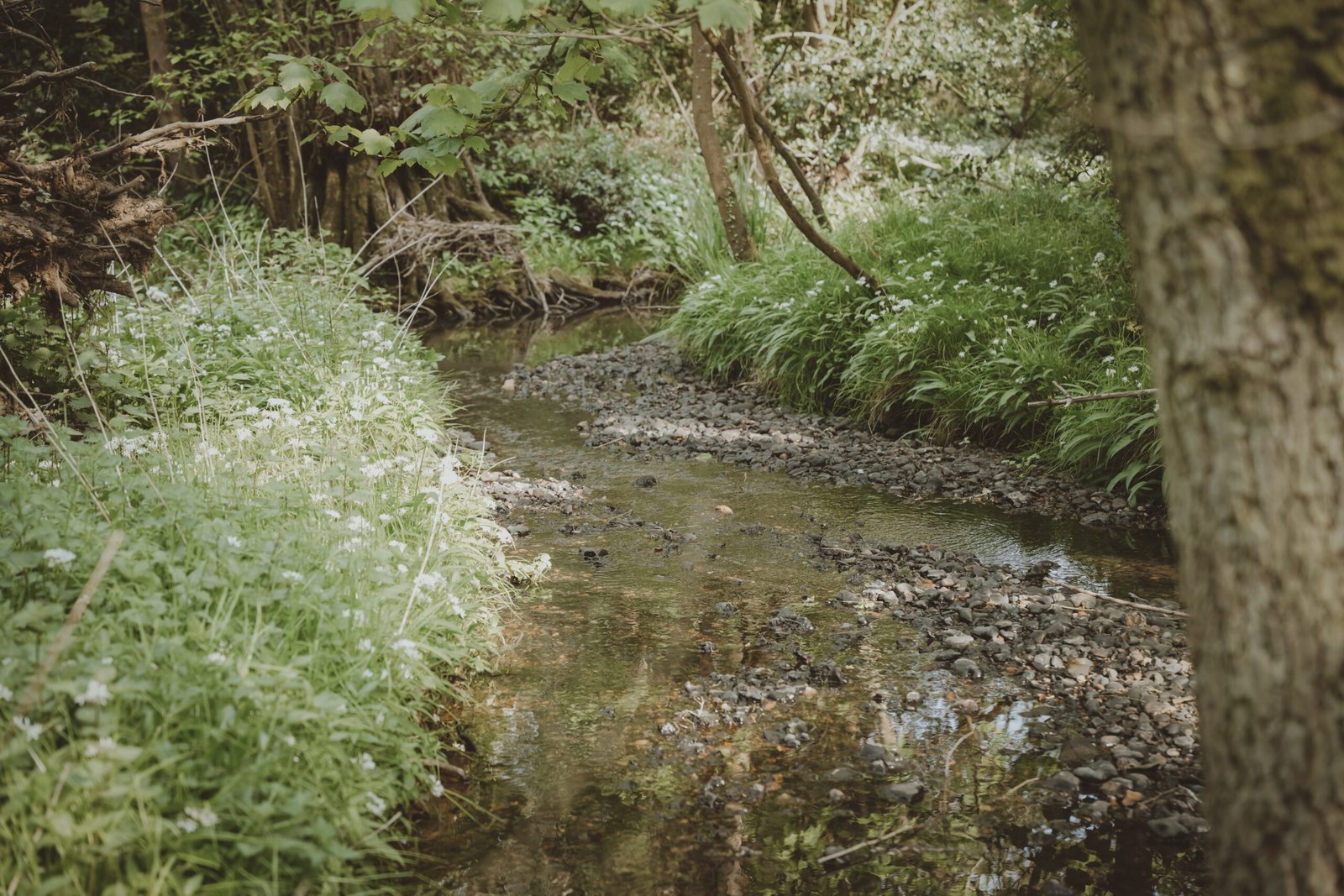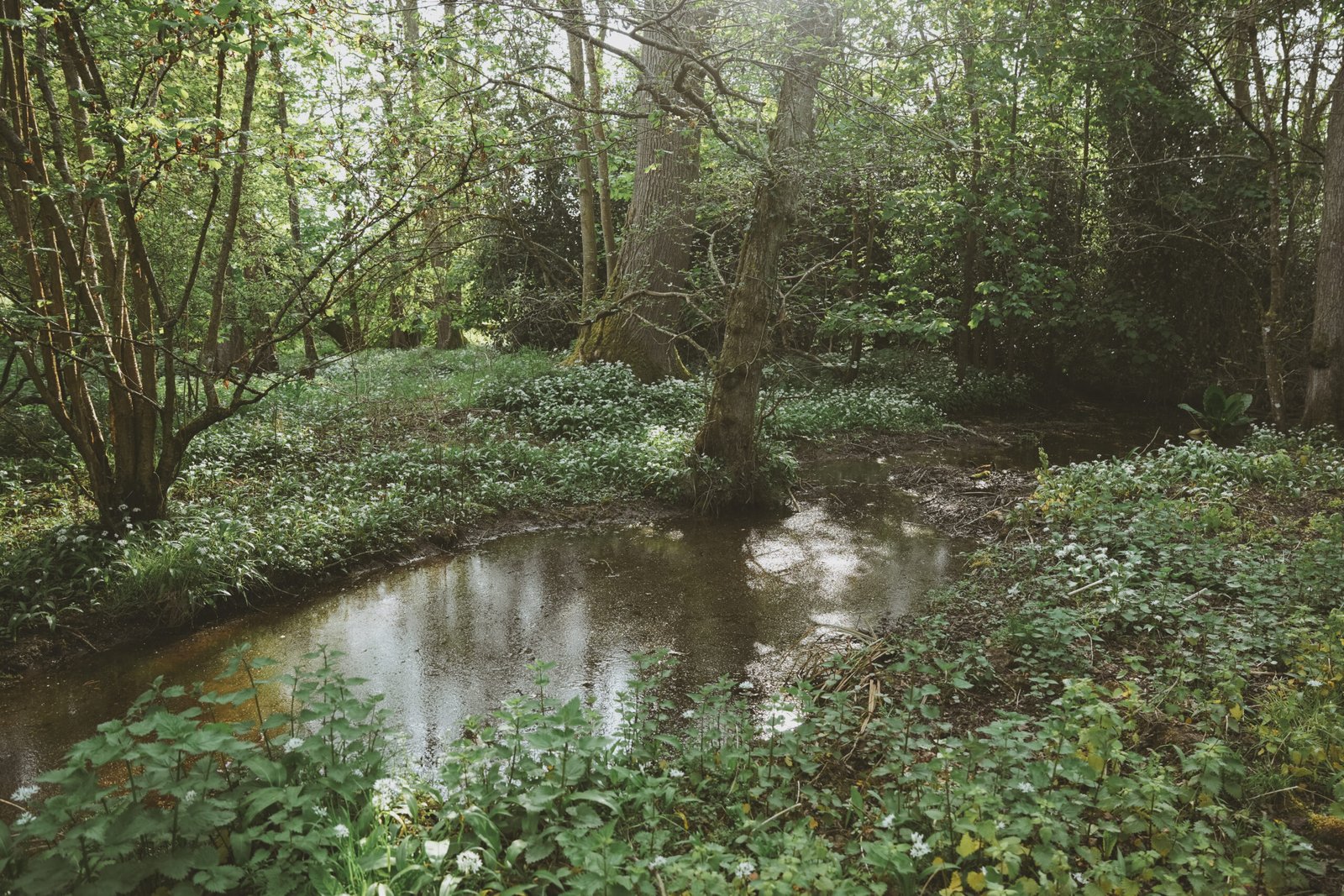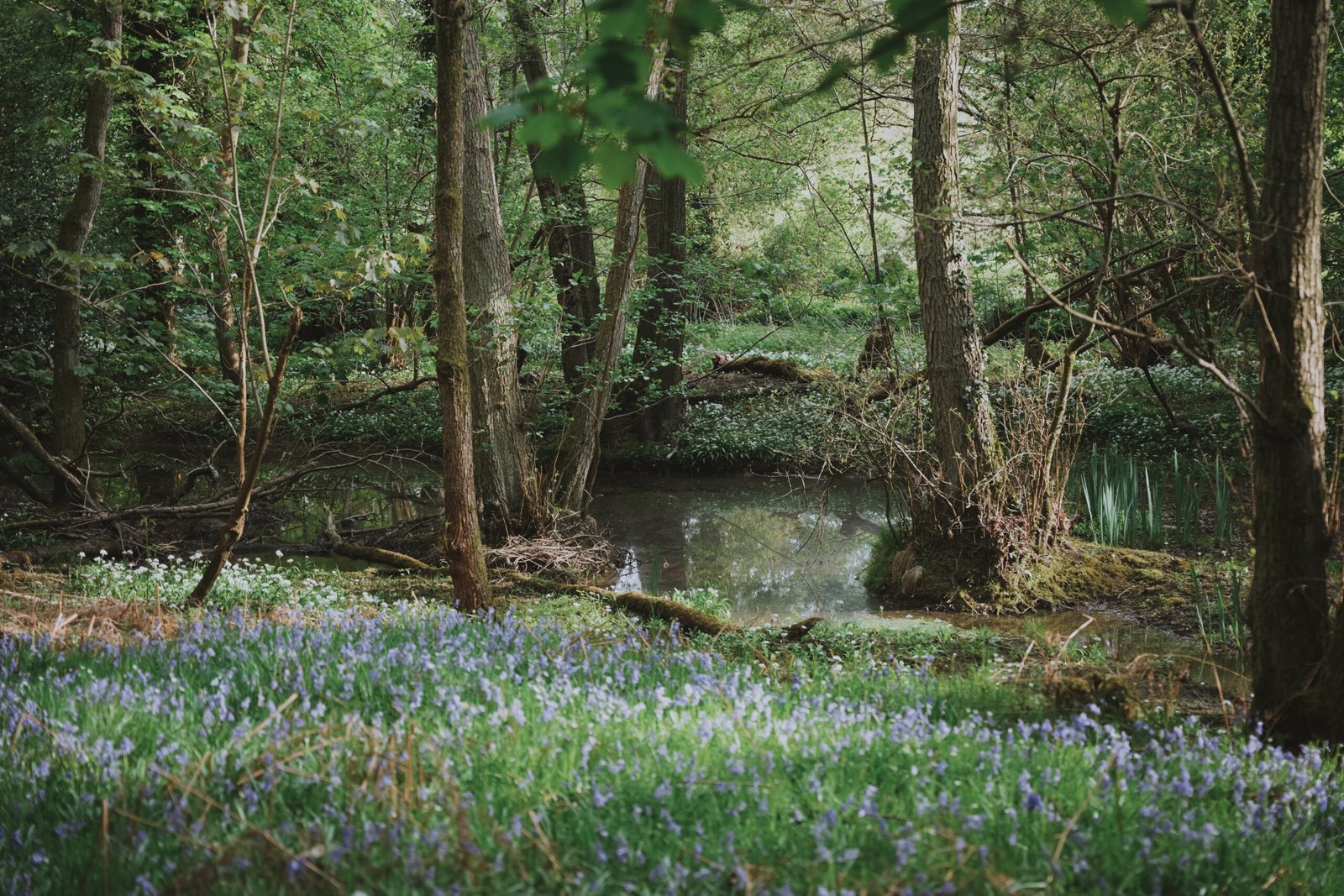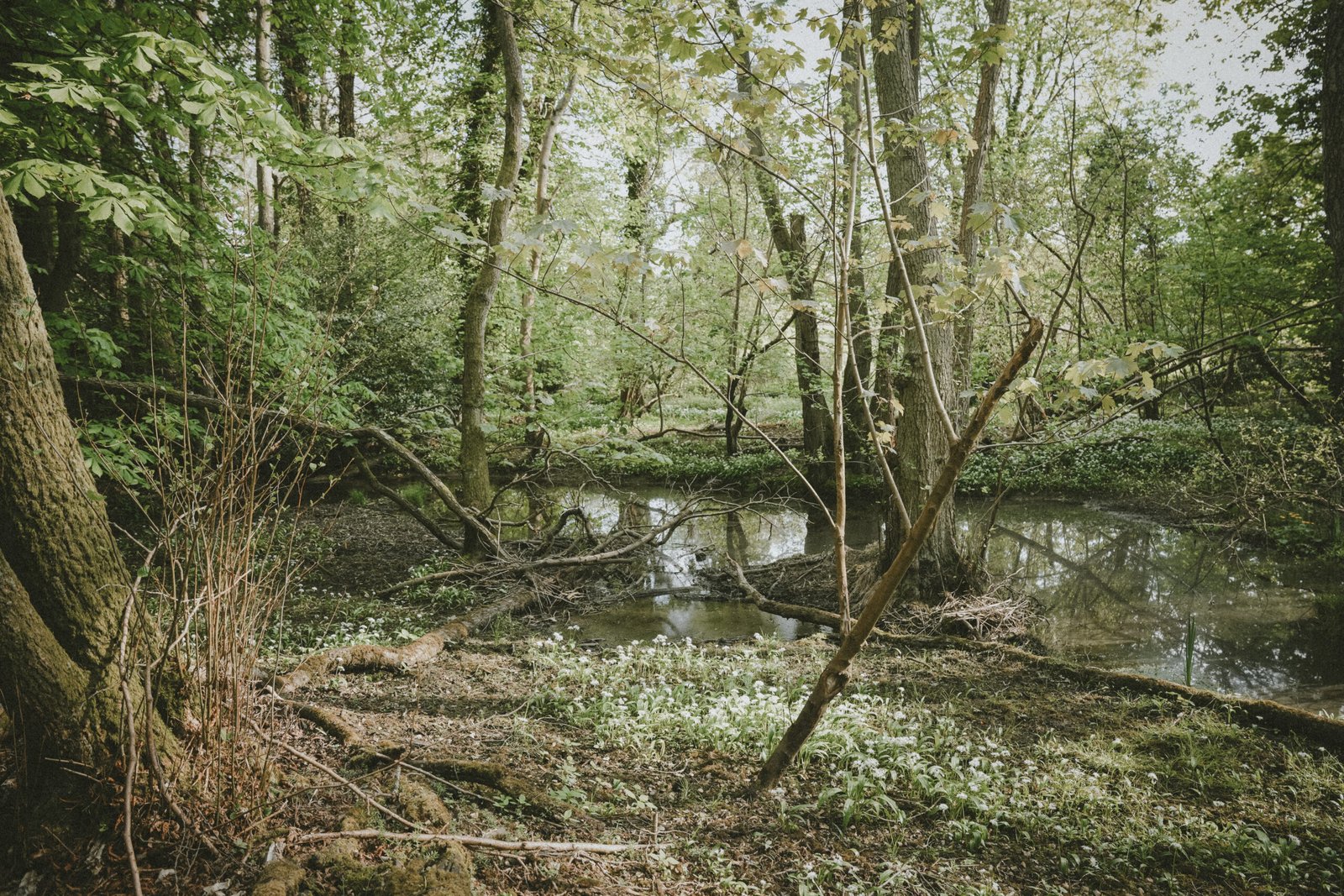On the Real Watership Down
The Woods and the Crossing
The rabbits must get across the River Enborne to leave Sandleford Park and West Berkshire behind them.
Hazel suspected that if Fiver felt they ought to cross the river, it might be dangerous not to. But how were the others to be persuaded? At this moment, as he was still wondering what to say to them, he suddenly realized that something had lightened his spirits. What could it be? A smell? A sound? Then he knew.
Near-by, across the river, a lark had begun to twitter and climb. It was morning. A blackbird called one or two deep, slow notes and was followed by a wood-pigeon. Soon they were in grey twilight and could see that the stream bordered the farther edge of the wood. On the other side lay open fields.
Chapter Seven—The Lendri and the River
After moonrise, Hazel, Fiver, Pipkin, Bigwig, Blackberry, Silver, Buckthorn, Hawkbit, Dandelion, Speedwell and Acorn assemble to leave Sandleford Warren. After a scuffle with three Owsla members, including Captain Holly, the rabbits slip away into the night (Chapter Four, The Departure). They flee to the south-east keeping the ‘brook’ to their left and travelling along its southern bank.
Reaching the end of Dirty Ground Copse (out of shot on the right). The treeline follows the ‘brook’, curving to the south.
I followed the route taken by the rabbits, beyond Dirty Ground Copse and along the brook treeline as it curved southwards. With the ground becoming increasingly boggy I moved up inside the field, pressing on. I passed through a broken treeline and over the footpath, marked on some maps as a byway, that crosses the park. This is the same track that was referred to in Chapter One as a ‘lane’.
Along the edge of the next field, the drainage ditch flows into a larger pool. If the water level is high enough it trickles down into denser woodland, Waterleaze Copse, where it feeds into the River Enborne. It was here, among the dead leaves, holly and ‘grassless woodland’ (Chapter Five, In the Woods) that the exhausted rabbits sat and listened to Dandelion tell his first story of El-ahrairah, the rabbit trickster (Chapter Six, The Story of the Blessing of El-ahrairah).
A pathway through the wild garlic and holly. The Enborne is off to the left, out of frame.
The rabbits are unexpectedly startled by a lendri, badger, and flee through some ilex (holly) bushes in Chapter Seven, The Lendri and the River. Then they come upon their biggest obstacle to date:
‘Hazel came out on the farther side of the ilexes and followed the path round a bend. Then he stopped dead and sat back on his haunches. Immediately in front of him, Bigwig and Dandelion were staring out from the sheer edge of a high bank, and below the bank ran a stream. It was in fact the little river Enborne, twelve to fifteen feet wide and at this time of year two or three feet deep with spring rain, but to the rabbits it seemed immense, such a river as they had never imagined. The moon had almost set and the night was now dark, but they could see the water faintly shining as it flowed and could just make out, on the further side, a thin belt of nut-trees and alders. Somewhere beyond, a plover called three or four times and was silent.’
In Chapter Eight, The Crossing, we learn the rabbits are positioned on the top of a sandy bank, ‘a good six feet above the water. From where they sat, the rabbits could look straight ahead upstream, and downstream to their left. Evidently there were nesting holes in the sheer face below them, for as the light grew they saw three or four martins dart out over the stream and away into the fields beyond.’ Here, the group eventually decide they must cross, though the tired Fiver and the injured Pipkin are unable to do so. It is only when Bigwig alerts the others to a loose dog in the woods that Blackberry discovers a piece of wooden board. This is used as a makeshift raft for the two smaller rabbits whilst the others swim to safety.
“There’s a dog loose in the woods!”
I visited the site on four occasions between mid-March and the end of August 2025 and on each occasion the woodland seemed overgrown, wild and off kilter. It is as if the spirit of place here is lonely, like it really doesn’t want you to leave once you have gone inside. The squirrels scatter rapidly as they’re not used to being disturbed. Large spiderwebs hang between branches and the paths are no longer completely obvious. Every footstep causes a significant noise with twigs snapping underfoot. Buzzards persistently circle overhead and their cries carry down through the trees.
Even the river seemed a little strange. Only in March was the Enborne flowing as Adams had described. Dry weather in April dictated the water level had dropped to a point where the smooth river I’d previously encountered was now, in places, a succession of standing pools divided by dry patches. Bigwig wouldn’t have needed to swim to check out the far bank. He could have hopped across. Things had improved a little for my August visits in that the water was moving once again, albeit at a very low level.
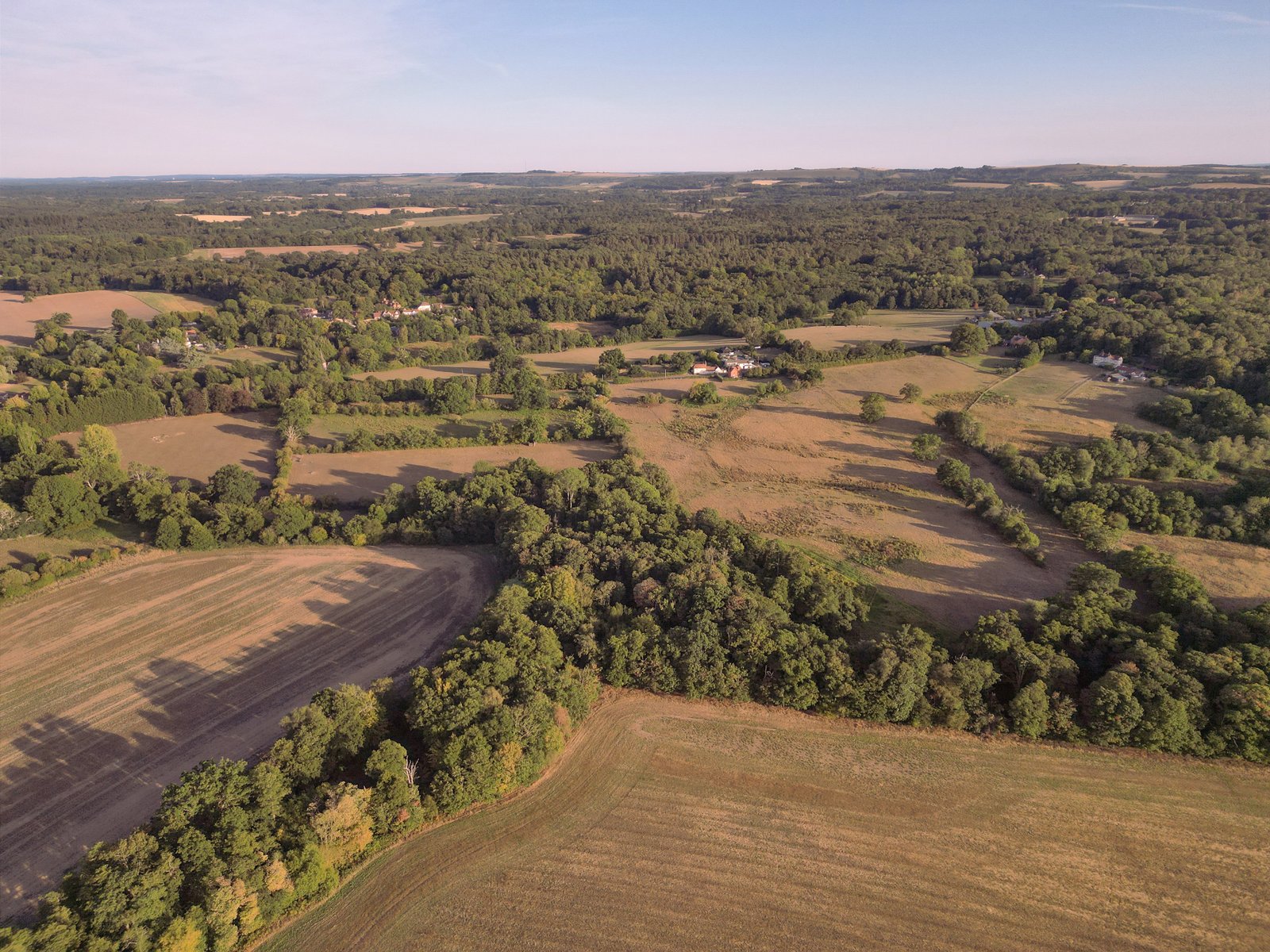
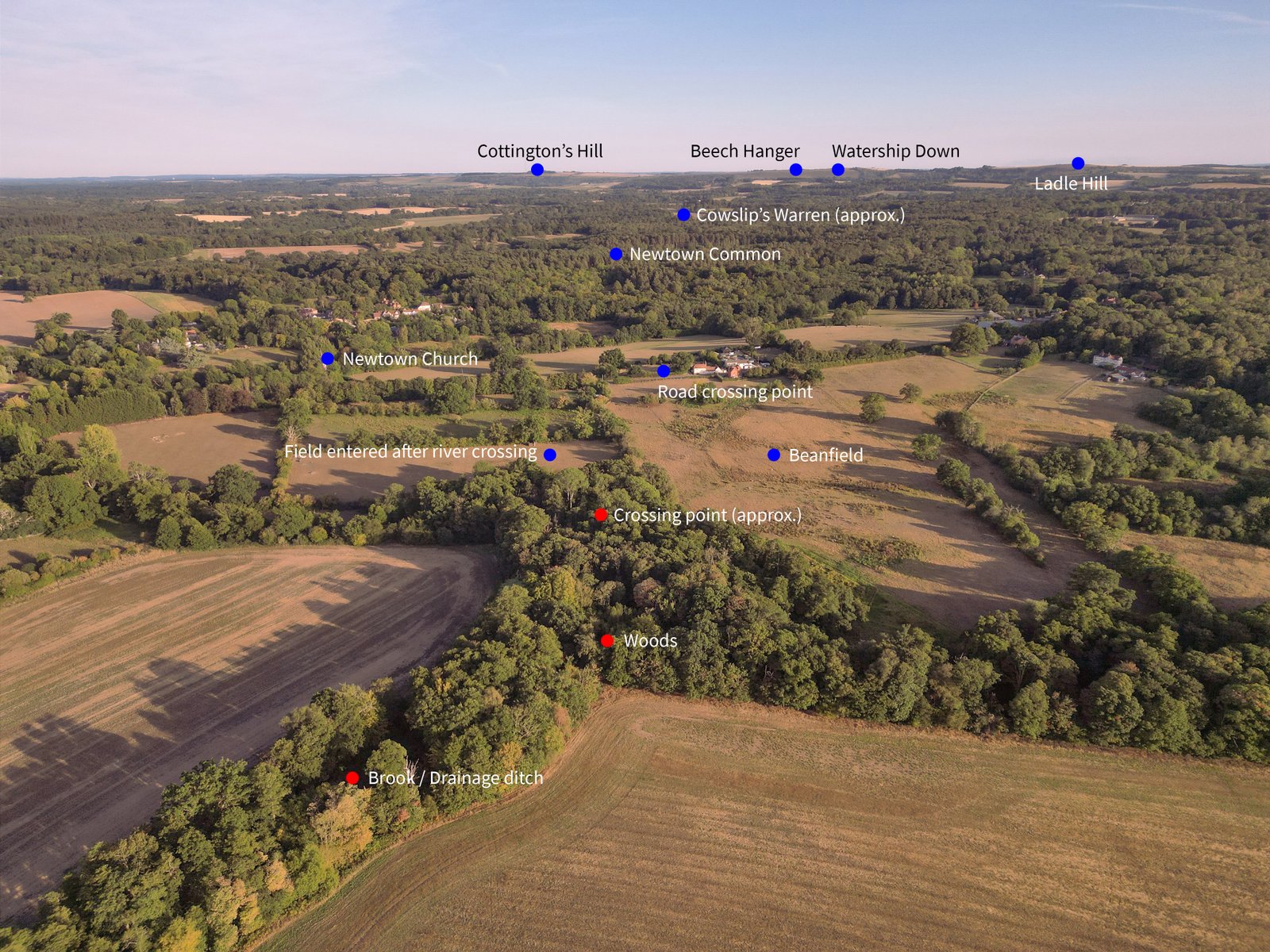
An annotated view of the woods and the river crossing point.
Attempting to identify exactly where the rabbits crossed the Enborne requires some thought. They left the bank west of the drainage watercourse and reached the other side to the east of the field where they would shelter under broad bean plants. This leaves a very small stretch of river. More specifically, Adams writes, ‘Immediately below [the rabbits] lay a wide pool and here the water was almost still.’
This part of the river can still be found. Here, the Enborne widens for a short distance and barely seems to flow. The photo below, from the second of my August 2025 visits, was taken on the bank at the end of a rough track indented into the light soil. I’m guessing other Watership Down pilgrims through the years were responsible, though this part of the bank can be quite difficult to explore with plenty of tall stinging nettles in the summer.

